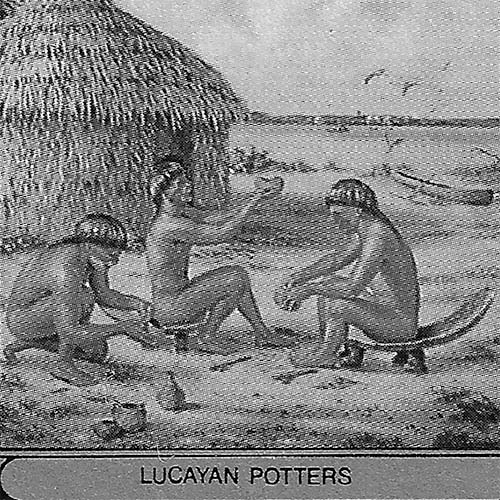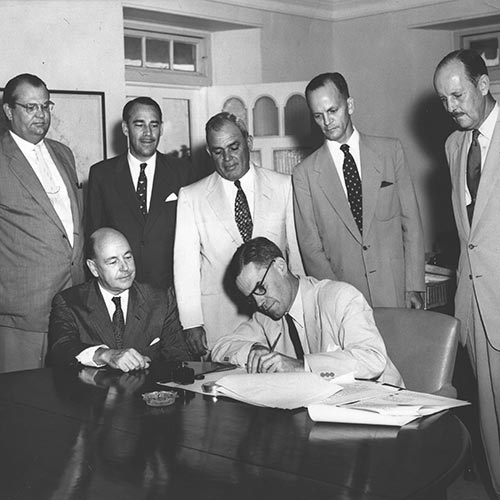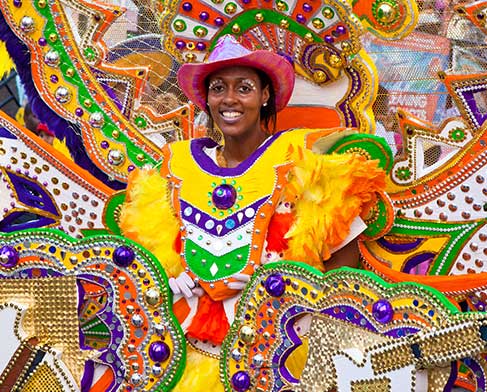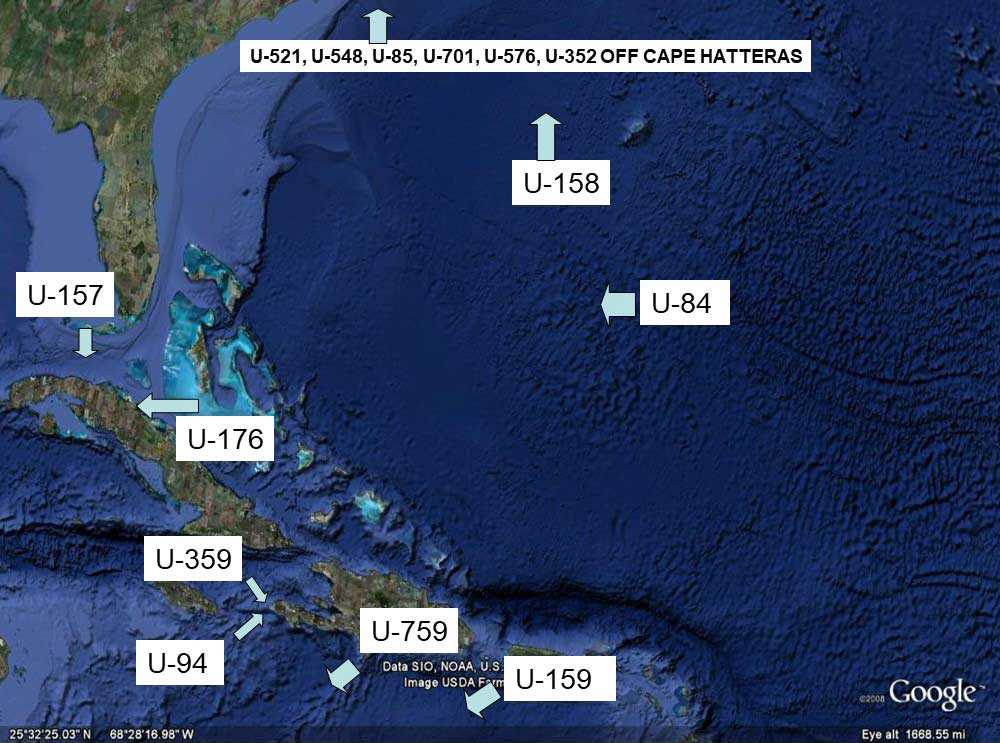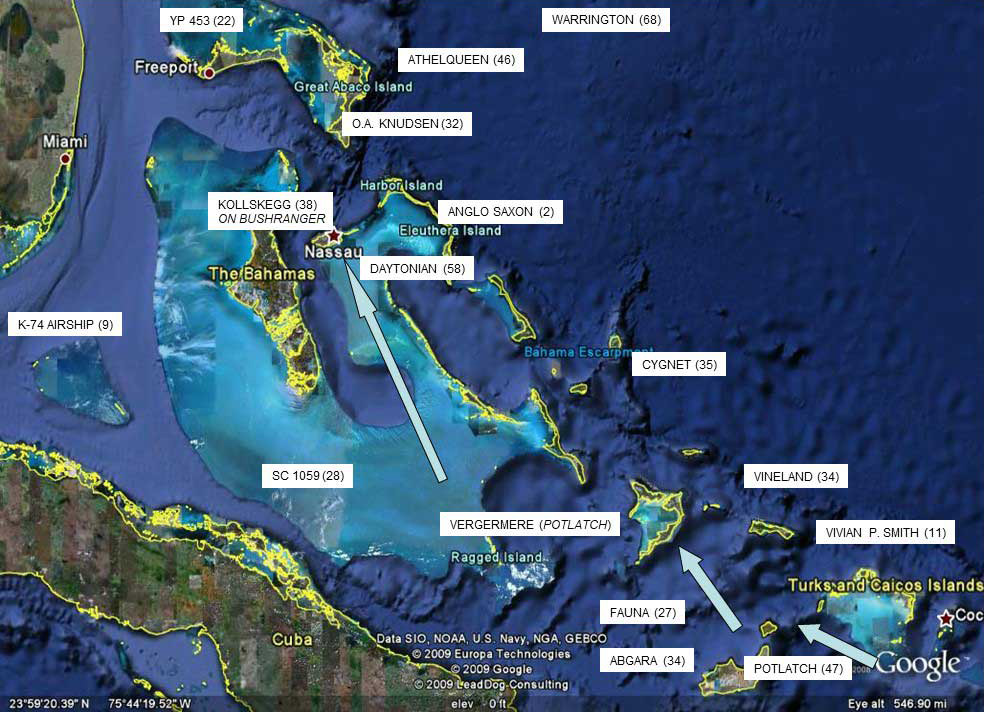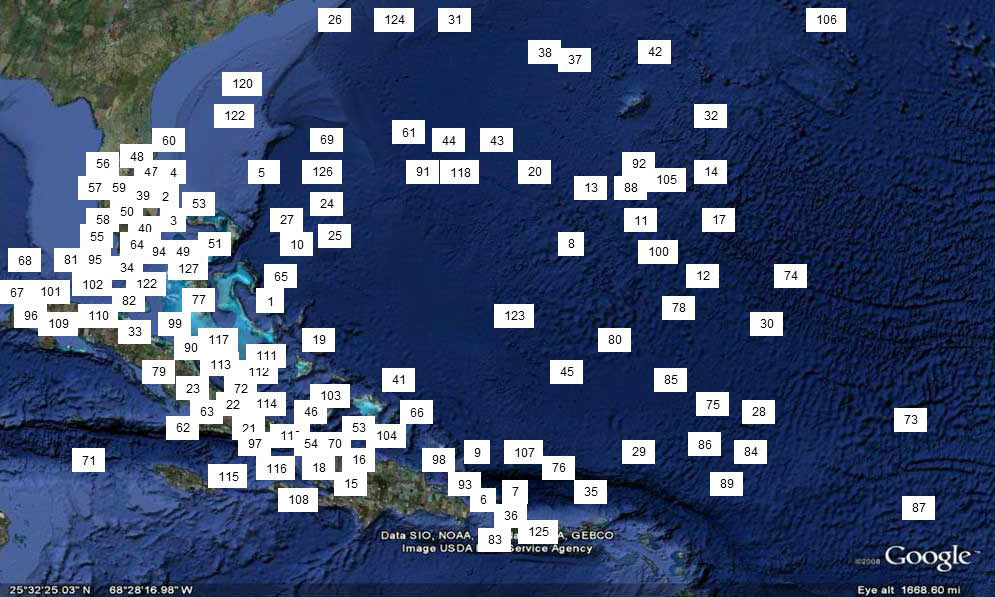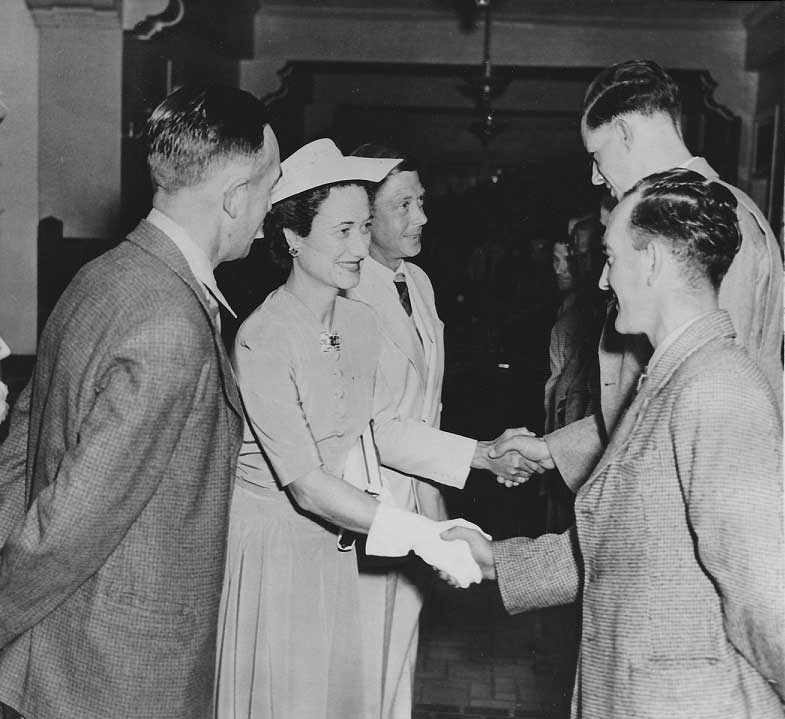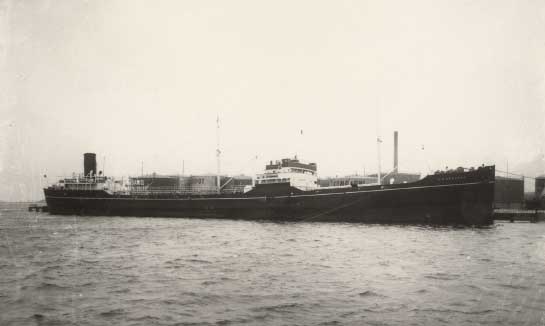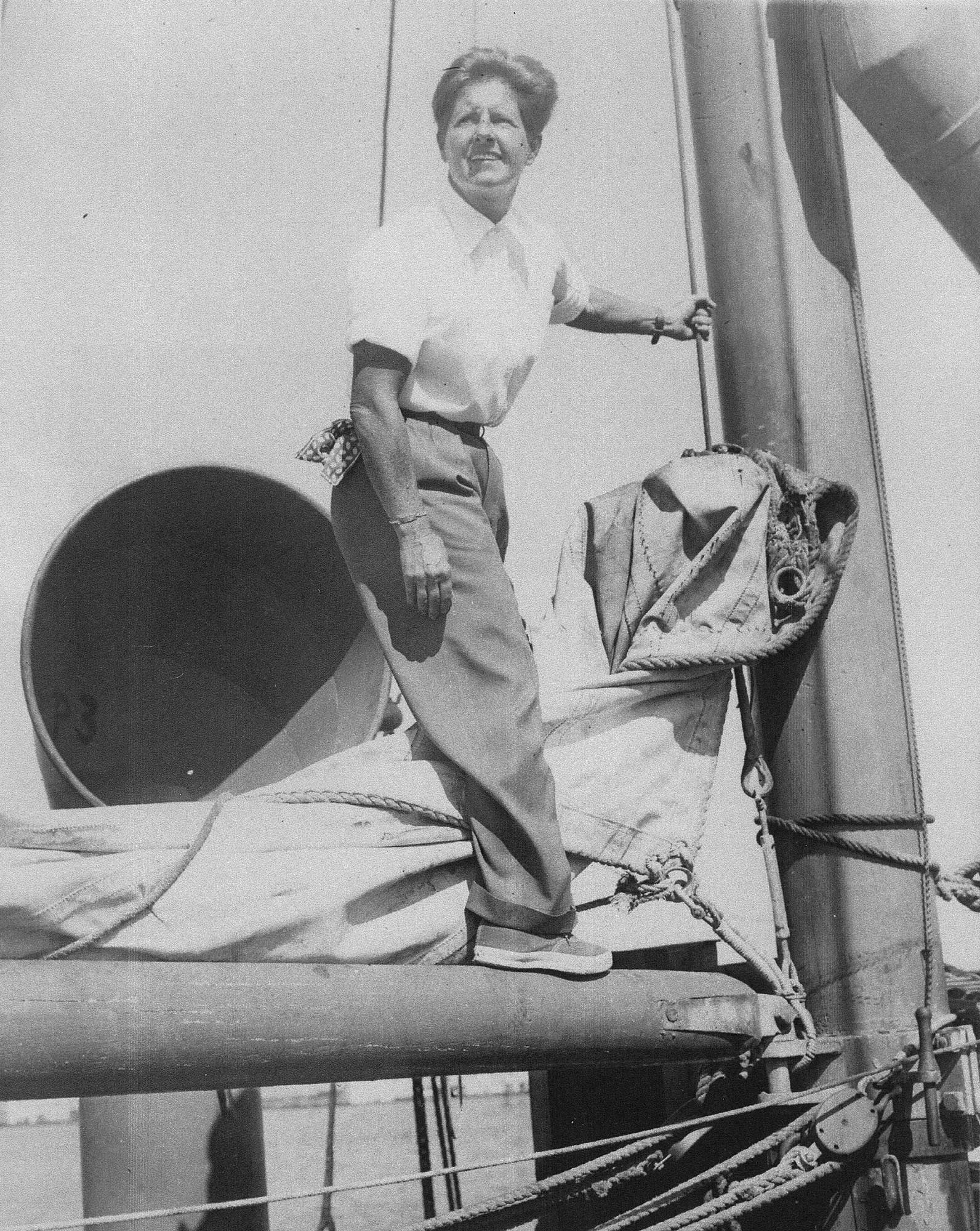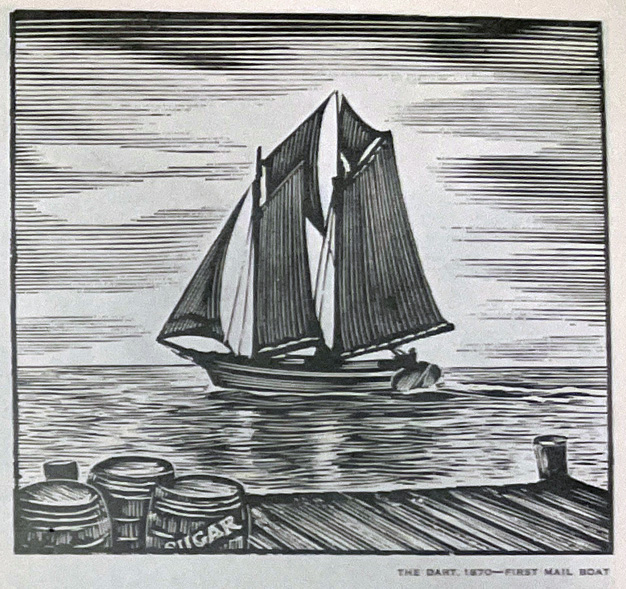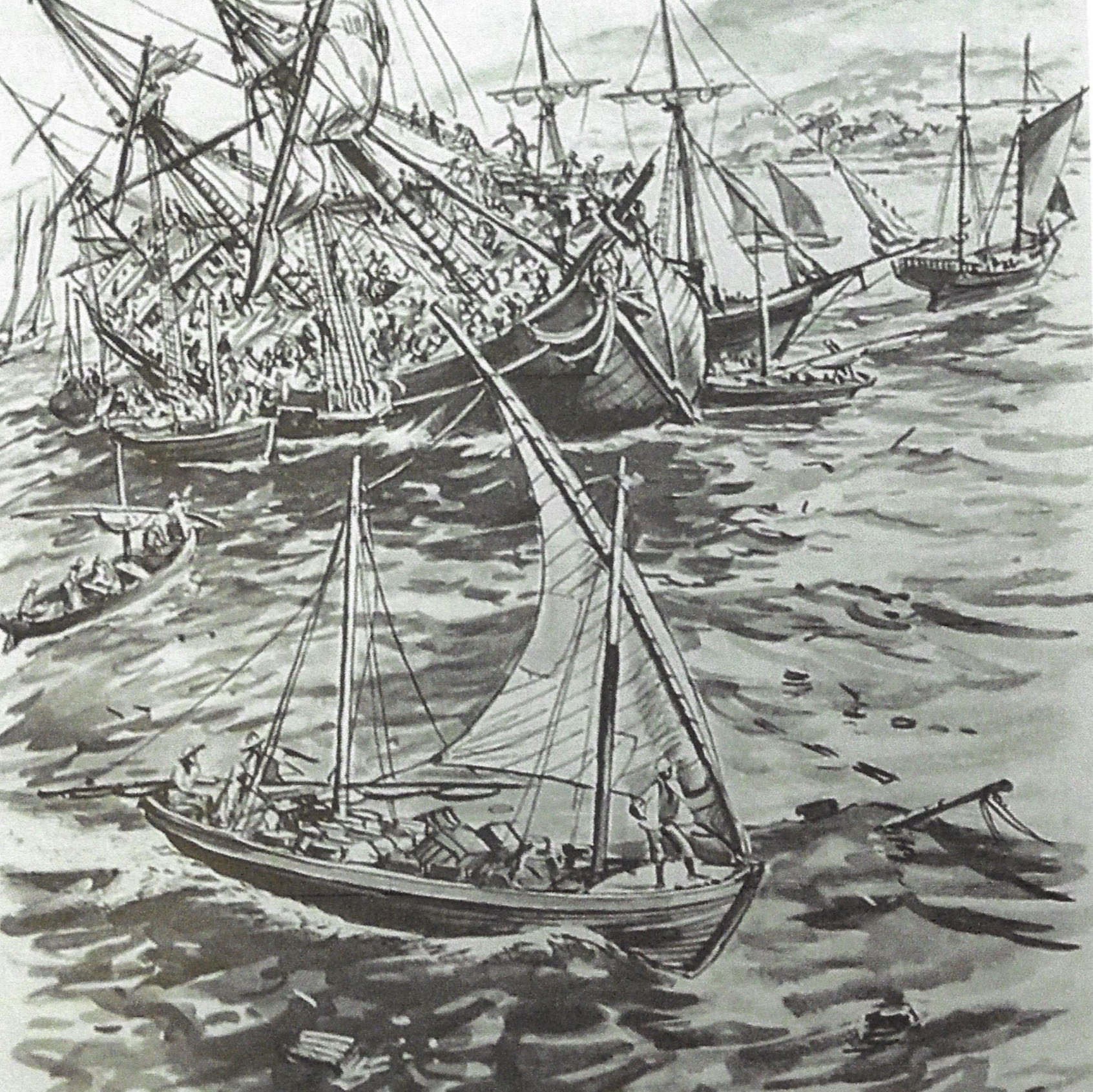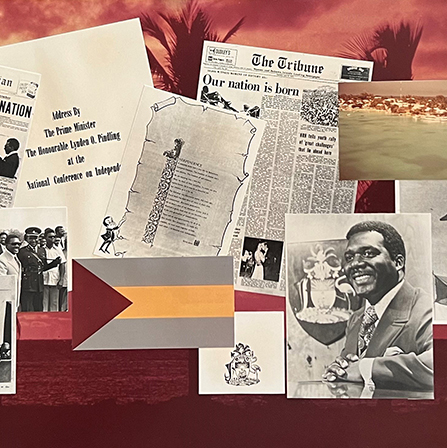Maritime & Aviation
U-Boats!
There were 130 Allied ships sunk by 112 Axis German and Italian submarines in and around the Bahamas during World War II.
Approximately 6,000 Allied sailors were thrown in the water, and about 300 of them washed ashore in the Bahamas and Turks & Caicos. There they were met and cared-for by locals, including Wallis Simpson, the Duchess of Windsor, head of the Red Cross in the British colony, as well as boat-racing oil heiress Marion “Joe” Carstairs.
In June and July 1942, 30 ships were sunk along the southern edge of the Bahamas . By November of 1942 U-boats had sunk 263 ships in the Caribbean Sea. The conflict became known as the Battle of the Caribbean, part of the Battle of the Atlantic waged between 1941 to 1945.
The Allies employed convoys, greatly improved sub-hunting and detection measures and radar. They finally broke the code of the German's Enigma machines and turned the tide against U-boat attacks by 1943.
A Strategic Target
The Caribbean Sea was targeted by the Germany and Italy during World War II because it was central to Venezuelan and Texas oil fields, refineries and the Panama Canal. Raw materials, such as bauxite, was mined in Central America and used to make the aluminum that was used in military aircraft.
The Caribbean was key to the Gulf of Mexico coastline and Mississippi River trade making the protection of the area an essential strategic element to Allied war efforts. No Caribbean country had Axis sympathies and many islands were colonial possessions of Allied countries, like America, Britain, France and the Netherlands. The Bahamas straddled several commercial chokepoints for shipping and trade and was important in anti-submarine efforts in the Caribbean.
The German Naval commander, Admiral Dönitz, designated a force of 23 U-boats to mount combat patrols halfway across the world in the Gulf of Mexico. German attacks targeted over 690,000 tons of Allied shipping in the Bahamas. Five ships and four U-boats were sunk directly among the islands around Grand Bahama Island.
The shallow clear waters around the islands were not ideal for U-boat operations. Allied forces had airbases around the Caribbean and extensively used the Bahamas for flight training. There were over 1,000 U-boat sightings reported during training missions.
The War Arrives in the Bahamas
On October 30, 1940, two emaciated seamen, Roy Widdicombe and Bob Tapscott, drifted ashore at James Cistern beach on Eleuthera. They had been adrift in an open boat for 2,000 miles and 10 weeks after their ship, the Anglo Saxon, was sunk by the Widder, a German Raider, commanded by Helmuth von Ruckteschell. They were welcomed to Nassau by the Governor of the Bahamas, H.R.H. the Duke of Windsor, and treated by Dr. John M. Cruikshank, Chief Medical Officer of the Bahamas. After celebration and publicity tours, Widdicombe was later drowned in a U-Boat attack just before returning home to Britain.
U-504, under Hans-Georg Freidrich Poske, sank the Mamura, a tanker of 8,245 tons fully loaded with gasoline 165 nautical miles northeast of Great Abaco’s Elbow Cay Light in February 1942. The explosion and fire were so severe that the submarine, firing two torpedoes from 400 meters away, was forced to submerge to avoid the burning fuel on the water’s surface. All 49 people on the ship were burned to death or drowned. U-504 sank four ships of nearly 30,000 tons over the 67 days of that patrol.
Another of the first ships recorded sunk in the Bahamas during the war was the large Norwegian tanker O. A. Knudsen, which was attacked by the German submarine U-128 under Ulrich Heyse on March 5, 1942 east of Abaco. Three lifeboats and 39 survivors from the torpedoed ship made their way ashore, then to the Abaco Lumber Company and then onto Nassau. The Duchess of Windsor, Wallis Simpson, head of the Red Cross, and Lady Solomon arrange for accomodations in a hotel and contacted the owners of shops on Bay Street to open their stores to allow the men to help themselves on the government’s account. Both the Duchess and the Duke of Windsor came to see the men and received a rousing cheer, according to one account.
Learn more about the O.A. Knudsen.
Many more ships were attacked and damaged or sunk, especially early on in the war. One advantage for the U-boats was that American shorefront cities remained fully lit at night, silhouetting ships against the shore to U-boats, which attacked at night.
From Rhienhard “Teddy” Suhren, captain of U-564:
"I managed to sink six ships (40,000 tons in all) in the Straits of Florida, that hundred miles of seaway between Florida and the Bahamas linking the Gulf of Mexico to the Atlantic. ...the beaches were still blazing with lights, business was going on as usual, and lighthouses and buoys twinkled away as though in peace time. It took a long time for the Americans, who had been taken completely by surprise, to grasp what was really going on here..."
Warm Welcomes for Survivors
In Nassau, the Rozelda, Lucerne, Windsor, Prince George and Royal Victoria hotels all provided accommodation for U-boat attack survivors. Bay Street shop owners provided free goods and services. The Imperial Order Daughters of the Empire (IODE) set up a canteen for survivors and other military personnel in the Masonic building on Bay Street. Many of these welcome amenities were directed by Wallis Simpson, wife of the governor, the Duke of Windsor.
Getting Survivors Back Onto Ships
Merchant mariners like those aboard the sunken and damaged cargo ships and tankers were highly trained and hard to replace. Those that came ashore in the Bahamas were quickly sent to Nassau and back to England, as seamen were desperately needed for wartime service.
Notable Personages of the Era
Marion “Joe” Carstairs
When U-153 under Wilfred Reichman sank the US steamship Potlatch in June 1942, survivors were rescued off Bird Rock, Crooked Island by Marion “Joe” Carstairs of Whale Cay. She sailed to the site in her yacht Vergemere IV. The survivors were brought to Nassau on August 1st and repatriated to the United States a week later.
Marion Betty "Joe" Carstairs (1900 –1993) was one of the Bahamas’ true characters, a cross-dressing, lesbian heiress who owned Whale Cay in the Berry Islands. She was a power boat and race car driver and hosted such guests as actresses Marlene Dietrich, Greta Garbo, and Tallulah Bankhead, and the Duke and Duchess of Windsor. She funded several world record-setting speed attempts. On Whale Cay she built a large home for herself and her guests, plus a lighthouse, school, church, and cannery. She owned Bird Cay, Cat Cay, Devil's Cay, half of Hoffman's Cay, and a tract of land on Andros.
Learn more about the life of Marion Carstairs.
The Duke and Duchess of Windsor
When British King Edward VIII abdicated his throne in 1936, he became the Duke of Windsor. In 1937 he married American divorcée Wallis Simpson and was appointed Governor General of the Bahamas.
A very controversial character, he had fallen out of favor with the Royal family. Though the Duke privately referred to the islands as "a third-class British colony," he and his wife made the most of their five years in the Bahamas. The Duchess of Windsor oversaw renovation of Government House, writing in September 1940 - “Together we are going to dish this shack up so that at least one isn’t ashamed of asking the local here.”
While being suspected as Nazi sympathizers, the Duke and Duchess were kind and generous to U-boat attack survivors. As second president of the Red Cross in the Bahamas, the Duchess of Windsor personally greeted every Allied survivor of submarine attacks that arrived in Nassau during the war. She wrote in her memoirs:
"A few months after Pearl Harbor, Nassau got its first real taste of the war. The U-boats suddenly appeared in the Caribbean and off the Florida coast, to prey on the tankers and ore boats coming up from South America. In the space of ten days five shipwrecked crews landed in Nassau. With the other ladies of the Red Cross, I did what I could to make them feel comfortable while they waited evacuation. As that terrible spring wore on we began to receive some truly heart-wrenching cases – men who had drifted for days without food or water under the searing tropical sun."
Discover a Sunken U-Boat in the Dry Tortugas
Read Accounts of Sinkings from Author & Historian Eric Wiberg
Sources: "U-BOATS IN THE BAHAMAS AND BERMUDA TRIANGLE," by Eric T. Wiberg, Esq.
At Amazon.com: U-Boats in the Bahamas
